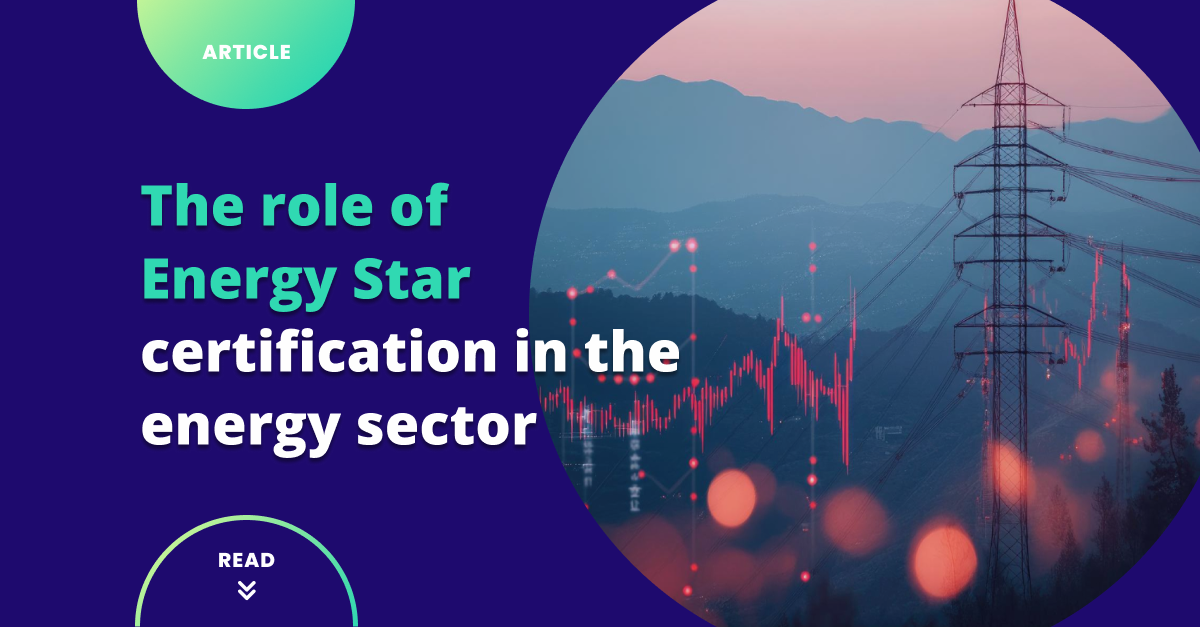The role of Energy Star certification in the energy sector

The role of Energy Star certification in the energy sector
The ENERGY STAR program, co-managed by the United States Environmental Protection Agency (EPA) and the Department of Energy, has evolved significantly since its inception in 1992. While initially associated with monitors and computer products, it has expanded to cover a broad spectrum of technologies and electrical appliances. In this article, we explore the nuances of ENERGY STAR certification, its multifaceted benefits, and its critical role in the renewable energy sector.
What are the benefits of Energy Star certification?
Energy Star certification is a prestigious accolade that signifies a product’s exceptional energy efficiency and unwavering commitment to environmental sustainability. The renewable energy industry is placing increasing emphasis on efficiency and sustainability. Certifying products with Energy Star offers numerous advantages:
- Enhanced credibility and trust: Energy Star certification signifies compliance with rigorous energy efficiency standards, instilling consumer trust.
- Increased efficiency: Energy Star-certified products, such as EV chargers, operate with maximum efficiency, conserving energy and lowering operational costs.
- Compatibility with modern standards: Integration with protocols like OpenADR ensures seamless interaction with advanced energy management systems and allows products to be able to offer customers the ability to participate in demand response programs to earn additional financial benefits.
- Market differentiation: Products bearing the ENERGY STAR label stand out in the market, attracting consumer preference and boosting competitiveness.
- Environmental stewardship: Adherence to ENERGY STAR guidelines underscores a commitment to environmental conservation, aligning with global sustainability goals.
Software versus hardware in Energy Star certification
Software plays a crucial role in achieving Energy Star certification by working hand in hand with hardware requirements to boost energy efficiency. Electric vehicles offer a clear example of this teamwork, where advanced software and hardware come together to create eco-friendly transportation systems. Meeting the criteria for Energy Star involves carefully addressing various software standards, emphasizing attention to detail and a dedication to top-notch performance. These include:
- Charging efficiency: Setting standards for the efficiency of onboard chargers and charging software to minimize energy losses.
- Energy management algorithms: Optimizing power usage for various vehicle functions, including heating, cooling, and propulsion.
- Monitoring and reporting: Mandating software features that monitor energy usage and provide feedback to promote eco-friendly driving behaviors.
- Smart grid integration: Requiring software capabilities that allow EVs to communicate with utility providers and optimize charging based on grid conditions and energy pricing.
- Over-the-air updates: Demonstrating secure and efficient software update mechanisms to enhance energy efficiency over time.
- Energy-saving modes: Assessing the effectiveness of software-driven energy-saving modes during various driving conditions.
Each of these criteria underscores the critical role of software in advancing energy efficiency goals, particularly in the context of electric vehicles. By meeting these standards, manufacturers not only demonstrate their commitment to sustainability but also contribute to the broader goal of creating a greener future.
Qualifying for Energy Star certification
Energy Star-certified products must meet rigorous energy efficiency criteria established by the EPA. More than 75 product types across various categories, including appliances, electronics, lighting, heating, cooling, and commercial equipment, can earn the Energy Star label. To secure certification, products must navigate a three-step process:
Step 1: Testing
Manufacturers subject their products to rigorous testing at EPA-recognized laboratories. These tests evaluate energy efficiency while ensuring that energy savings do not compromise product performance. For example, LED light bulbs must meet energy efficiency standards without compromising brightness or quality.
Step 2: Review
Independent certification bodies, and impartial third-party organizations recognized by the EPA, review the product test results to assess compliance with Energy Star program requirements. These bodies and laboratories must adhere to international accreditation standards.
Step 3: Ongoing Testing
Certified product models may undergo additional “off-the-shelf” testing to verify continuous compliance with ENERGY STAR requirements. This meticulous process upholds the integrity of energy savings claims. Currently, there are approximately 70,000 Energy Star-certified product models.
The path forward: Considering Energy Star certification
Preparing for Energy Star certification in the renewable energy and e-mobility products requires a comprehensive approach that encompasses both hardware and software aspects. Ensuring compliance with ENERGY STAR criteria involves rigorous testing and review processes to validate energy efficiency, performance, and sustainability.
Collaborating with a technology solutions partner like Codibly, who has deep expertise around Energy Star criteria, but who also deeply understands the surrounding ecosystem like OCPP for EV charging, CTA-2045 / EcoPort for smart devices, and OpenADR or IEEE 2030.5 for demand response participation, is essential to ensure your team gets it right and captures value for its customers and other stakeholders. Through our extensive portfolio of activities in this space, we have helped clients efficiently understand the complex ecosystem, and then we leverage our suite of pre-built, pre-certified accelerators, supported by a small team of implementation experts, to rapidly achieve their intended outcomes, allowing them to save time and money, and to deliver superior products to their customers.
Please get in touch with one of our experts if you’d like to discuss your own goals!
contact us
Need expert guidance on your next energy project?
Reach out to us and discover how Codibly can offer tailored solutions to drive your business.